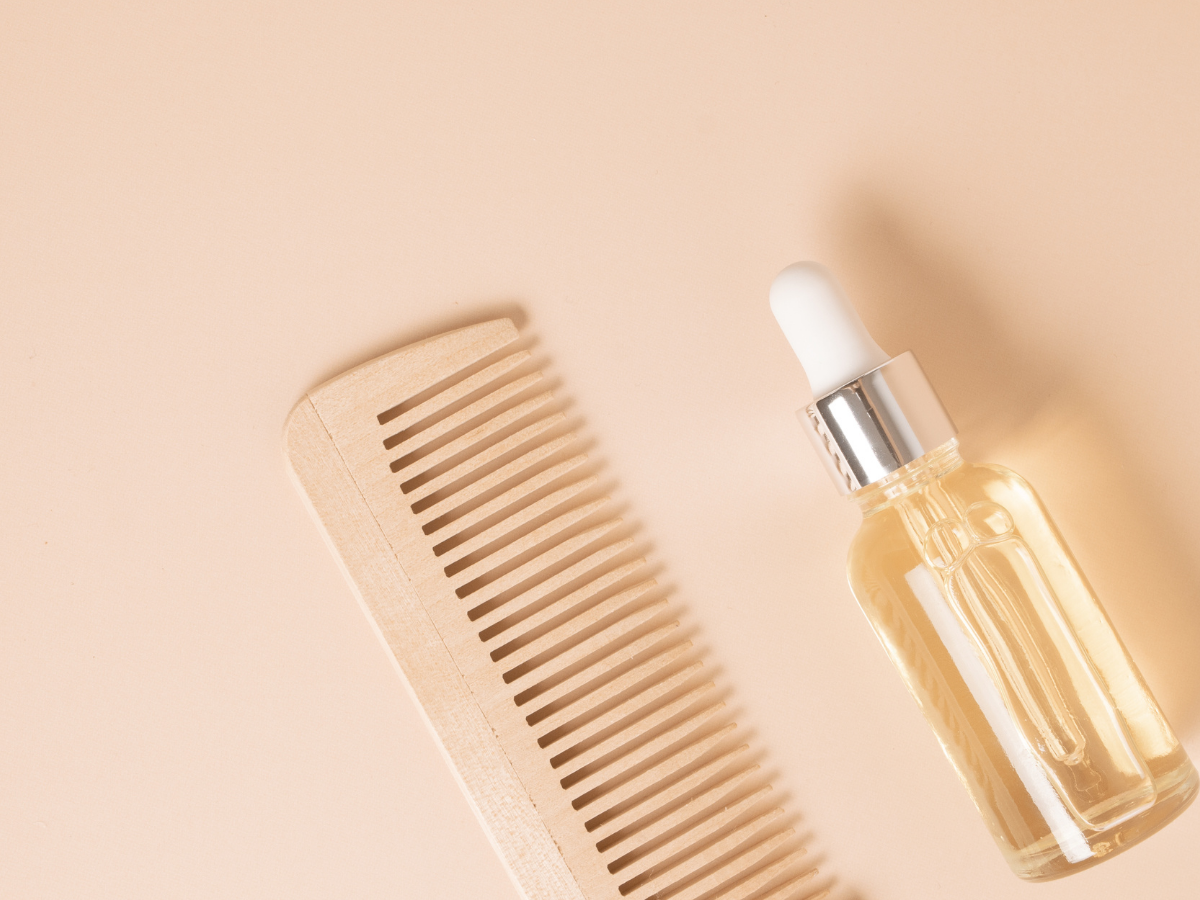Seeing more hair on your pillow or in the shower drain can be a stressful experience. For many Filipino men, hair loss is a major concern that can impact self-esteem. Navigating the world of treatments can be confusing, with countless products promising miraculous results. The two main categories of clinically-proven treatments you will encounter are topical solutions that you apply directly to your scalp, and oral medications that you take as a pill.
Understanding the difference between topical vs oral hair growth treatments is the first step in finding the right solution for you. Both approaches have been scientifically proven to be effective, but they work in different ways and have unique benefits and considerations. Knowing the signs of male pattern baldness can help you identify the issue early, and this guide will help you understand your primary treatment options.
How Topical Hair Growth Treatments Work
Topical treatments are solutions or foams that are applied directly to the scalp, targeting the hair follicles from the outside. The most well-known, FDA-approved, and widely used topical treatment for hair loss is Minoxidil.
Interestingly, Minoxidil began its life as an oral medication for high blood pressure. Researchers soon discovered an unexpected side effect, patients were growing hair in various places. This led to its reinvention as a topical solution specifically for treating androgenetic alopecia, or male pattern baldness. According to the National Institutes of Health (NIH), Minoxidil works primarily as a vasodilator, which means it widens the blood vessels in the area where it is applied.
When applied to the scalp, it is believed to work in several ways:
-
Increased Blood Flow: By widening the blood vessels around the hair follicles, it improves the flow of oxygen-rich blood and nutrients, which are essential for healthy hair growth.
-
Prolonging the Growth Phase: It helps to stimulate and prolong the anagen, or active growth, phase of the hair cycle, leading to longer and thicker hair over time.
-
Revitalizing Follicles: It can help to increase the size of miniaturized hair follicles, allowing them to produce thicker, healthier hair strands instead of the fine, vellus hairs characteristic of balding.
Topical treatments like Minoxidil are generally considered safe and are often recommended as a first line of defense against hair loss. Because they are applied locally, the risk of the medication causing effects elsewhere in the body is minimized.
How Oral Hair Growth Treatments Work
Oral hair growth treatments are prescription pills that work systemically, meaning they circulate through the bloodstream to address the problem from the inside. The most common and effective oral medication for male pattern baldness is Finasteride. Finasteride is designed to tackle the root hormonal cause of male pattern baldness. This common type of hair loss is primarily driven by the hormone dihydrotestosterone (DHT). DHT is a potent androgen that is converted from testosterone by an enzyme called 5-alpha-reductase. In men who are genetically predisposed to hair loss, DHT binds to receptors in the hair follicles on the scalp. This binding action causes the follicles to shrink, or "miniaturize," over time. This process shortens the hair growth cycle and results in progressively thinner, shorter, and less pigmented hairs until the follicle eventually becomes dormant.
As explained in extensive research available through the National Center for Biotechnology Information (NCBI), Finasteride works as a 5-alpha-reductase inhibitor. By blocking this enzyme, it dramatically reduces the amount of DHT in the scalp and bloodstream. This reduction in DHT helps to halt or slow down the miniaturization process, giving the hair follicles a chance to recover and once again produce thicker, healthier, and longer-lasting hair.
Comparing the Two A Head-to-Head Look
Both topical and oral treatments are powerful tools in the fight against hair loss, but they are suited for different needs and come with different considerations. Understanding these differences is key to making an informed decision.
|
Feature |
Topical Treatments (e.g., Minoxidil) |
Oral Treatments (e.g., Finasteride) |
|
Mechanism |
Increases blood flow to follicles, prolongs growth phase. |
Reduces DHT levels systemically to stop follicle miniaturization. |
|
Application |
Applied directly to the scalp once or twice daily. |
Taken as a pill once daily. |
|
Best For |
General hair thinning and stimulating new growth. |
Stopping the progression of hereditary hair loss and preserving existing hair. |
|
Side Effects |
Primarily local, such as scalp irritation, dryness, or itching. |
Systemic and less common, but can include sexual side effects in a small percentage of users. |
|
Convenience |
Can be messy, requires drying time, may affect hair styling. |
Very convenient, easy to incorporate into a daily routine. |
|
Availability |
Often available over-the-counter in some formulations. |
Prescription-only medication. |
The Power of Combination Therapy
While both treatments are effective on their own, many doctors and hair loss experts, including those cited by institutions like Harvard Health Publishing, believe that the most powerful approach is combination therapy. Using both Minoxidil and Finasteride together tackles hair loss from two different, complementary angles.
Think of it as a strategic one-two punch against hair loss. Finasteride works internally as a defensive shield, protecting your hair follicles from the damaging effects of DHT. At the same time, Minoxidil works externally on the surface of the scalp as an offensive stimulant, promoting a healthier growth environment and encouraging follicles to produce robust hair. This synergistic approach, often referred to as the most effective hair loss combo, can lead to better, faster, and more comprehensive results than using either product alone.
What to Expect on Your Hair Regrowth Journey
Patience and consistency are the two most important virtues when it comes to treating hair loss. Regardless of which treatment you choose, it takes time for the biological processes to work and for visible results to appear. Hair growth is a slow cycle. You will likely not see significant changes for at least three to six months, and the full effects can take up to a year or more. During the first few weeks of using a treatment like Minoxidil, some men may even experience a temporary increase in shedding. While alarming, this is often a normal and positive sign that the treatment is working, as the follicles are pushing out the old, weaker hairs to make way for new, healthier ones to grow in. It is crucial to stay consistent with your treatment every single day to achieve the best possible outcome. Understanding the typical hair regrowth timeline can help you set realistic expectations and stay motivated.
Making the Right Choice for Your Hair
Choosing between topical and oral treatments, or deciding to use both, is a significant medical decision that should be made with professional guidance. A doctor can properly diagnose the cause of your hair loss, which is crucial as not all hair loss is male pattern baldness. They can discuss your medical history, the potential benefits and risks of each treatment, and help you create a plan that is tailored to your specific situation and health profile.
At Andyou, we are committed to providing Filipino men with access to clinically-proven, effective, and safe solutions for hair loss. Our platform connects you with licensed medical experts who can guide you through your options and support you on your journey to regaining your hair and your confidence. Exploring the different hair growth products that actually work is a great way to start your research and prepare for a productive conversation with a healthcare professional.

















